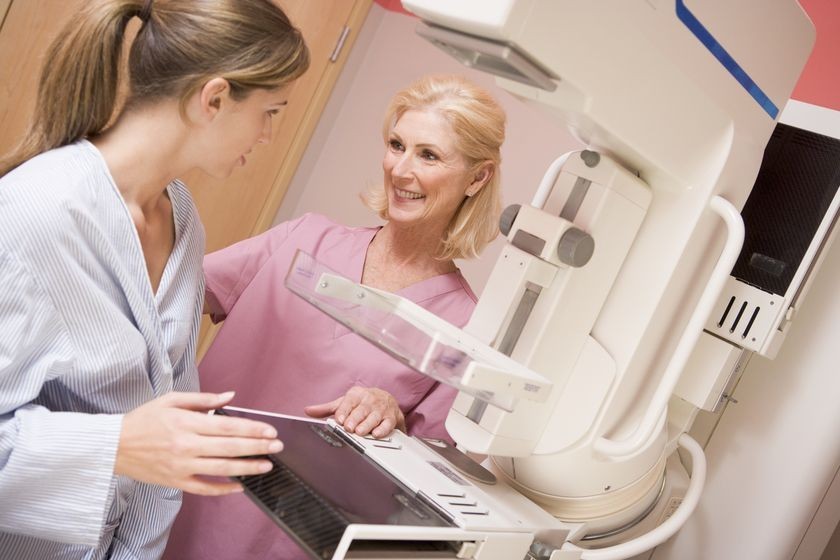The Mammography Quality Standards Act (MQSA): What Physicians Should Know
More than 65 percent of U.S. women aged 40 and over had mammograms between 2013 and 2015, and all of them were protected by a little-known 1992 law called the Mammography Quality Standards Act, or MQSA. Understanding this law is important for radiologists and referring physicians alike, so they can explain it to assure patients that their care meets strict standards of quality. This increases trust between patients and health care providers, ultimately leading to better outcomes.
So what does the MQSA do, exactly? The short answer is that it requires diagnostic imaging providers to produce mammogram images that meet high standards of quality. For a longer, more in-depth answer, we need to look back at the years before Congress passed the law, to a time when breast cancer was “the most compelling health threat to American women,” as a 1993 article in the American Journal of Law & Medicine states.
(Though breast cancer rates have been decreasing since 2000, one in 8 women in the U.S. will still develop the illness in 2018. More than 40,000 American women are expected to lose their lives to breast cancer that year.)
In the early 1990s, the American College of Radiology maintained a set of accreditation standards that required monitoring for mammography equipment and staff qualifications. But those guidelines, strict though they were, were entirely voluntary. And as Dr. Charles Smart of the National Cancer Institute told Newsday in 1991, “Unless mammography is done with quality, there is no use doing it…It isn’t enough to get a woman to get a mammogram. It has to be a good mammogram. And it has to be interpreted by someone who is experienced and trained in it.”
That wasn’t always the case at the time. The Physician Insurers Association of America studied the efficacy of mammograms in the early 1990s and found that 35 percent of women with breast cancer actually had negative results on their mammograms. Another study found that image quality and radiation exposure differed greatly from one diagnostic imaging provider to the next.
By 1992, the effects of this lack of quality had gained the attention of Congress. They acted to pass a bill that would require all diagnostic imaging facilities that conduct mammograms to meet certain standards of quality and to be issued a certificate from the Secretary of Health and Human Services: The Mammography Quality Standards Act of 1992.
What the Mammography Quality Standards Act Requires from Imaging Providers
In order to obtain a certificate, diagnostic imaging providers must meet a distinct set of standards, including, in part:
- They must pass a review of their clinical images at least every three years.
- These images will comprise a random sample and must be inspected by qualified physicians.
- These reviewers must not have a conflict of interest with the sites they inspect.
- In addition to the review of images, facilities must pass an annual survey conducted by a medical physicist.
- All personnel involved in the preparation and reporting of a mammogram must be certified by the Secretary of Health and Human Services.
A major component of retaining accreditation is the quality of mammogram images themselves. Certified MQSA review physicians carefully inspect a representative range of a mammogram-provider’s images. They score these images based on the quality of at least eight criteria:
- Correct positioning, such that the chance of missing signs of cancer are reduced.
- Adequate compression that avoids conflating motion artifacts and actual tissues.
- Perfect exposure; neither underexposed nor overexposed.
- There must be enough contrast between light and dark to easily show subtle differences in tissue density.
- The image must be sharp, not blurry.
- A minimum of visual “noise,” or visible artifacts from the imaging process.
- No processing artifacts, such as scratches or lint, may be allowed to obscure the structures of the breast.
- All images must include identification and other exam details.
The U.S. Food and Drug Administration oversees the MQSA program, and has approved a small group of organizations as “accreditation bodies,” or entities that can legally provide the accreditation necessary for conducting mammography procedures. The American College of Radiology is the main accreditation body under the MQSA, but the states of Arkansas, Iowa, and Texas can also provide credentials for facilities located within their borders.
The Costs of Failing to Comply with MQSA
All diagnostic imaging providers that offer mammograms must comply with the quality standards set forth under the MQSA. If they violate any part of the standards, the Secretary of Health and Human Services might issue any of a series of corrective actions, including:
- Providing a plan and a timeline for the facility to correct its violation.
- The Secretary may order on-site monitoring at the facility’s cost.
- In egregious cases, the Secretary may order the violator to send notifications to all of their patients, explaining the situation.
- For certain violations, the Secretary can issue a fine of up to $10,000.
Ultimately, violating MQSA regulations can shutter a business in two ways. The accrediting body, such as the ACR, could withdraw a facility’s accreditation. Or the Secretary of Health and Human Services can revoke the certificate. Owners and operators of facilities that lose their certificates may even be banned from offering mammograms for two years.
How Effective is MQSA at Improving the Quality of Mammograms?
As of the latest report, 8,726 facilities were certified to perform mammograms in the United States, not including VA hospitals. Inspections turned up no violations for 88.5 of these providers.
Patients who are new to mammography may be encouraged to learn that nearly 90 percent of the mammogram providers in the country meet the strict standards of quality required by the MQSA. To learn more about the Mammography Quality Standards Act, see the FDA’s website about the program here.

